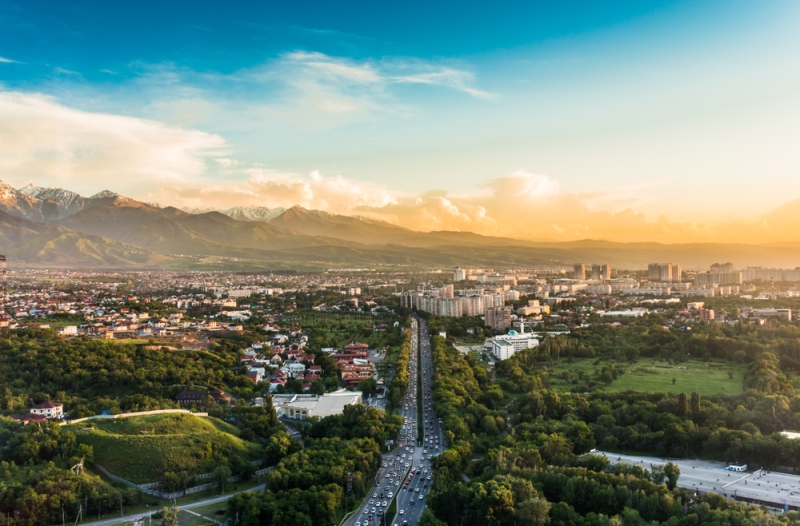
Almaty is the former capital of Kazakhstan, a very green city by the standards of a metropolis. It is located on the border of two opposite worlds: the windswept steppe and the cool, forested and snow-covered mountains. Late spring or early summer is the best time to visit these regions. The flat part of Almaty will surprise the guest with scarlet scatterings of poppies along the roads and wild camels in the outskirts of the city, and trips to the mountains will give the joy of civilized hiking, fresh air and the opportunity to take stunning photographs.
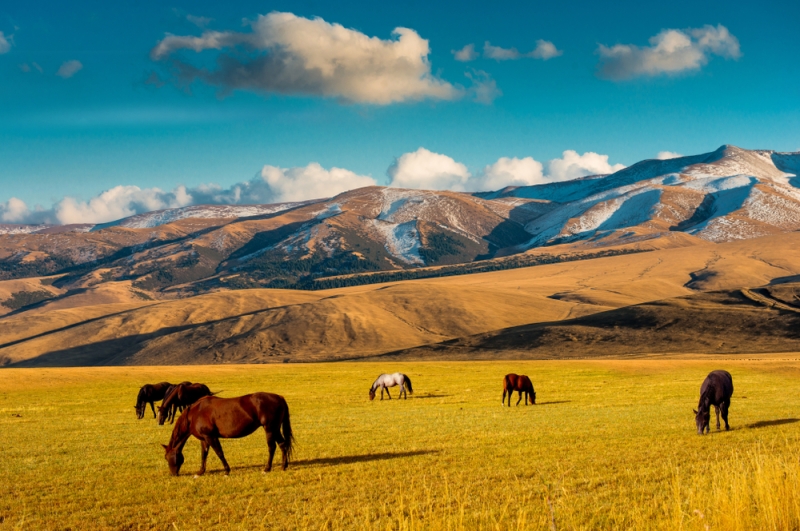
How to get there:
The easiest way is by plane. The cost of air tickets from Moscow to Almaty directly starts from 12,400 rubles*.
Where to live:
In Almaty you can stay in cozy hotels near the center, for example, in “Ramada Almaty” or “Kazzhol Almaty”. The panoramic windows in the rooms offer views of the city. The cost of one night for a double room starts from 5,000 rubles*.
How to get around:
Some of the local attractions are located within the city, so you can get to them by taxi or public transport. It is more comfortable to get to other locations by rented car. The rental price per day starts from 3,000 rubles*. Routes that run through dirt roads can be covered in a tourist UAZ or on horseback.
Butakovo Gorge
The gorge, named after the river flowing in it – Butakovka, is actually located within the city of Almaty. The starting point of the walking or cycling track can be reached by public transport. A walk along the Butakovsky Gorge is a typical weekend route for residents of the area, so if you are going to these parts, it is better to go on weekdays.
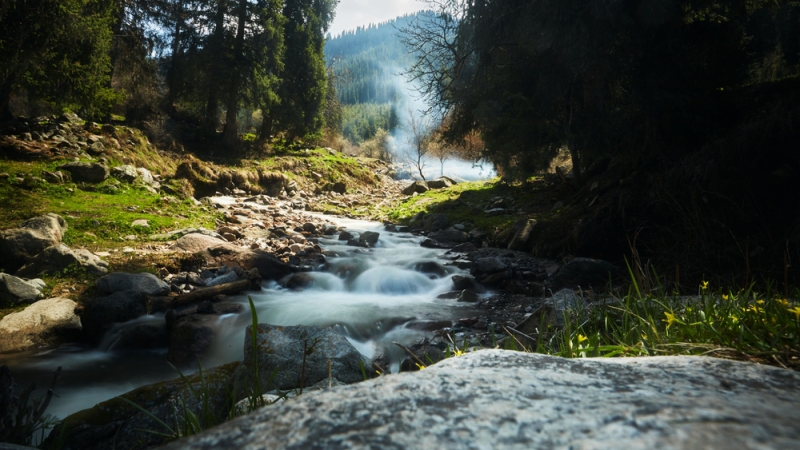
In a sense, this attraction is a test version of the Turgen Gorge: there are two waterfalls here – Upper and Lower Butakovsky. Although they are not very tall and powerful, they look impressive in photographs. Along the hiking trail grow wild apple trees, aspen trees, barberry bushes and, of course, spruce trees. And if this doesn’t seem enough, in Butakovka there are simple passes that lead to neighboring gorges – for example, Left Talgar. Local hiking routes to three-thousand-meter peaks – Pionersky Peak and Mount Katyrbulak are also interesting, along the way to which one can see the almost five-thousander – Talgar.
Turgen Gorge
An hour’s drive from Almaty, you can walk through the amazing land of waterfalls, lakes, tracts, meadows and mountain rivers. All this can be found in the Turgen Gorge, which is part of the Ile-Alatau Nature Reserve. In ancient times, a nomadic and trade route ran along it, so people have long mastered these places well. In the gorge there is a sanatorium with hot springs, a trout farm and even an ostrich farm. But the main value of Turgen lies in nature: wild apricot groves and relict spruce forests, in which you can see roe deer and lynxes, hares and leopards, foxes and badgers.
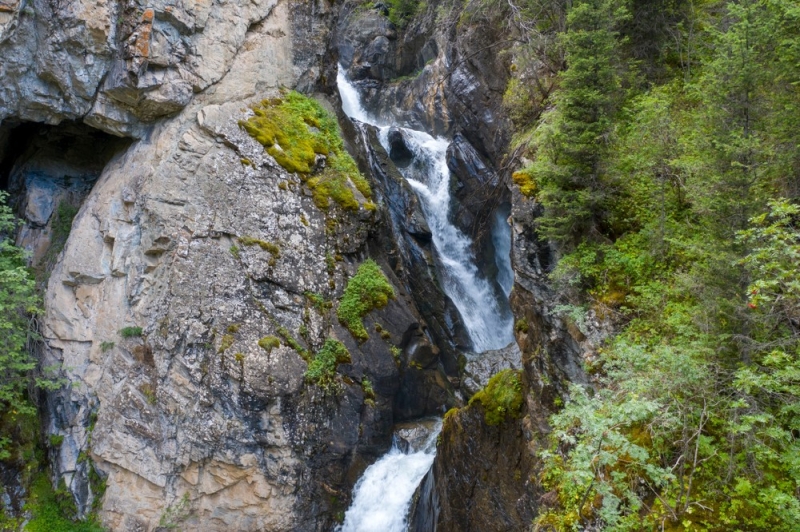
This place is also called the land of waterfalls. There are three of them here: Bear, Kairak (you can find another name – Buzgul) and Skalisty. The first, Bear Falls —river. It is named so due to its power: the flow here is so strong that it has cut a whole tunnel in the rocks. The second waterfall – Buzgul – is glacial. Jets of melt water fly down from a 30-meter height of picturesque cliffs covered with Tien Shan firs. Rocky – a beautiful cascading waterfall. Its highest ledge is located at an altitude of about 30 meters above the fall point, but only trained travelers can reach it.
The road through the gorge goes 44 kilometers deep into the mountains and ends at the Assy plateau, on which the astronomical observatory is located. At night in clear weather, it becomes obvious why the observation point for celestial bodies was built here.
Big Almaty Lake
15 kilometers south of the city, at an altitude of about 2.5 thousand meters, is the Big Almaty Lake. Contrary to its name, it has a small surface area: it is 1.6 kilometers long and 1 kilometer wide. During the dry season, the lake may become shallow by half, but in late spring and summer, when the glaciers melt, it fills to capacity and amazes with its beauty. Locals call it a turquoise pearl surrounded by the harsh Tien Shan mountains.
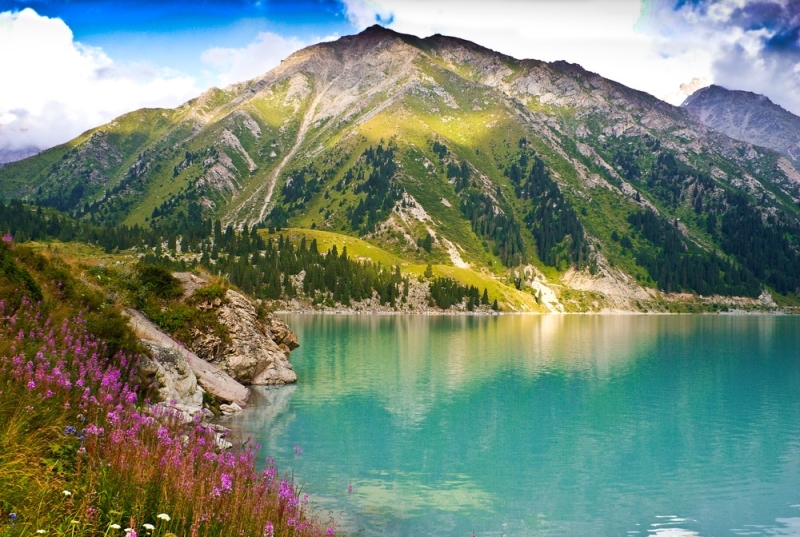
The route to the magnificent reservoir is closed for tourists: several years ago, part of the serpentine leading to the lake was damaged due to a collapse, and since then there has been a checkpoint there. You can now get there by hitchhiking, for example, together with employees of a weather station or astronomical observatory. There is an option to go up on foot: hiking takes from two to five hours, depending on the chosen route – along the road or directly through the mountains. But every minute of the difficult climb is worth what will be revealed at the end of the journey.
Charyn Canyon
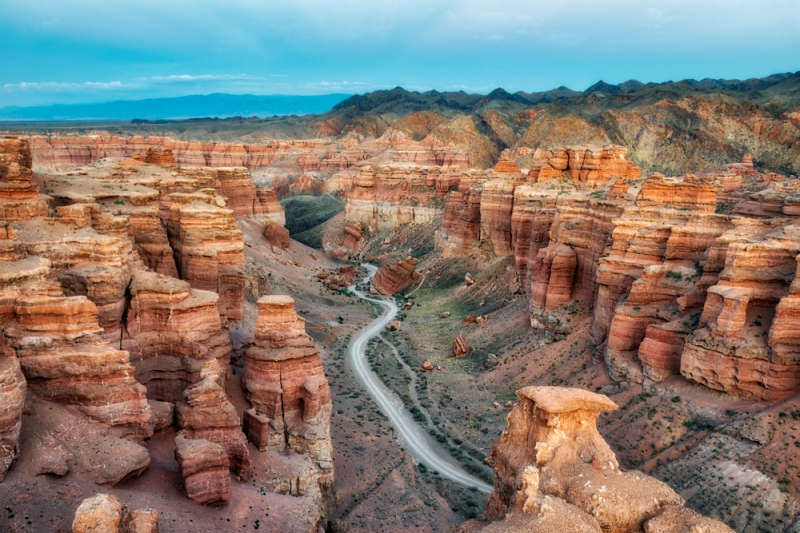
The road from Almaty to the picturesque gorge takes about three hours by car. The canyon stretches for more than 150 kilometers along the Charyn River, behind whose sharp bends dozens of natural locations of amazing beauty are hidden. For example, Valley of Castles – clay rock washed away by river water and destroyed by erosion has formed a bizarre relief here, reminiscent of the walls and towers of medieval fortresses up to 370 meters high! Or Turanga Grove, where the Asian poplar, turanga, grows. This tree is able to survive even in the most arid and rocky areas, which is why it has been revered by local residents as sacred since ancient times. Part of the route through the canyon passes through the so-called Lunar landscapes. Indeed, in this extended area, the views strongly resemble photographs from the surface of the Earth’s satellite. It’s good that here, unlike the Moon, there is enough oxygen!
Lake Kaindy
About 280 kilometers east of Almaty is the famous Kazakh Lake Kaindy. The reservoir is quite young – it was formed at the beginning of the last century as a result of an earthquake and a mountain collapse that blocked the river. Photos of this place have gained popularity thanks to the trunks of dead pine trees sticking out of the water. It is curious that the stems above the surface of the lake are bare, but under its turquoise surface branches and needles are preserved.
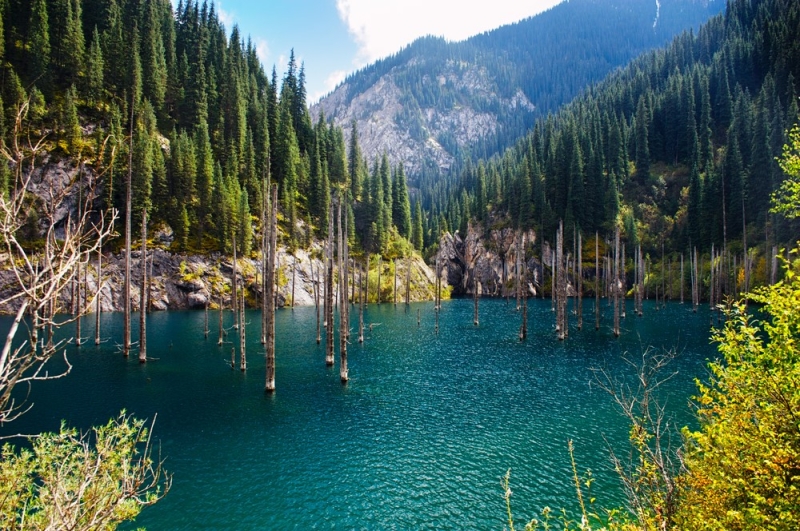
“Kaindy” is translated from Kazakh as “birch”: on the way to this attraction, tourists are greeted by dense birch groves with beautiful trees, uncharacteristic for mountainous areas. An environmental fee is charged for travel to Kainda, and the road involves several easy fords of the river and a walk of about three kilometers. If you are not a fan of hiking, there is another way to get to the lake: at the foot of the gorge, locals offer to climb on horseback.
Kolsay Lakes
Not far from Kainda there are picturesque alpine lakes, so people often go there immediately after the “birch” lake. In this case, even the environmental entry fee is paid once. Kolsai is a system consisting of three lakes. Tourists can get to the lowest one on their own by car; the second and third ones are often closed due to weather conditions. However, you can get to them by UAZ or on horseback, or on foot.
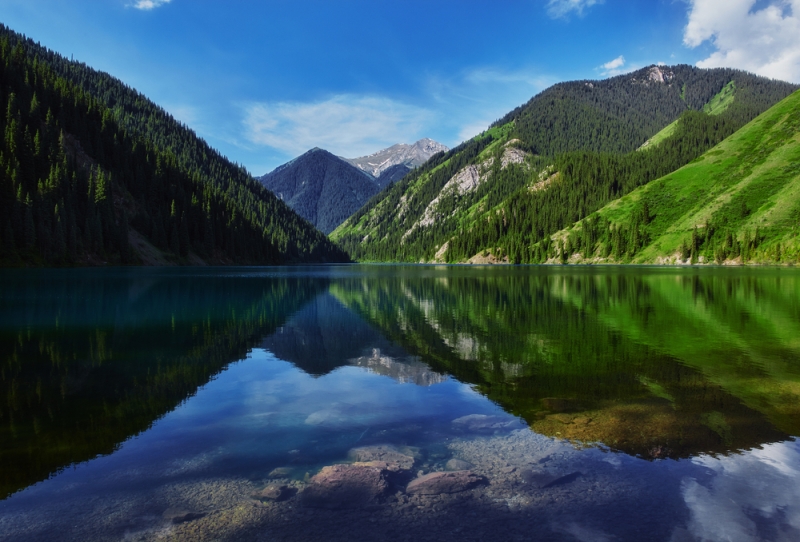
The main feature of the lakes is the water, which changes color depending on the time of day, weather and viewing angle. Returning tourists on Kolsai, they unanimously claim that they see different shades every time.
If the second and third Kolsai are open, then it is better to stay here for a couple of days and be sure to see the second lake – it is the most beautiful. You can stay at campsites or glamping sites located nearby. The road to the second Kolsai on foot takes several hours and runs along mountain streams, alpine meadows and Tien Shan fir trees – a real meditative hike. During the season, fishing and quiet hunting are popular on the lake: mushrooms and berries grow in abundance along the shores. But most Kazakhstanis and tourists go to this place to be inspired by pure pristine nature and untouched beauty.
*Prices valid at time of publication.
To search and book hotels online, use OneTwoTrip.

